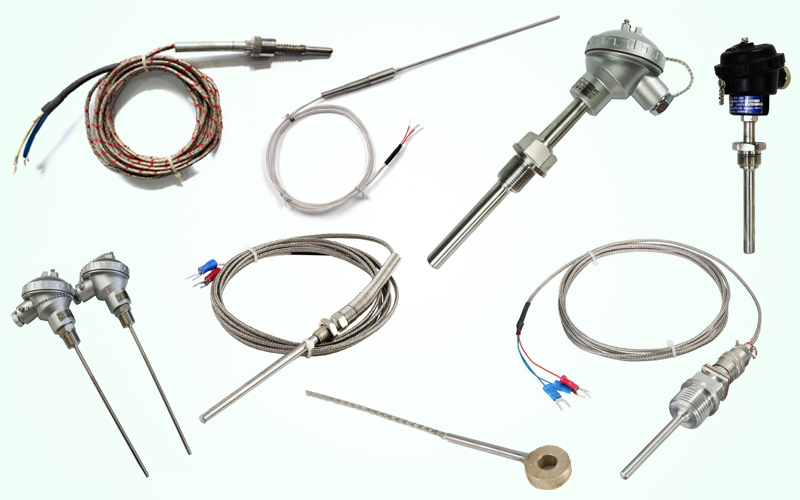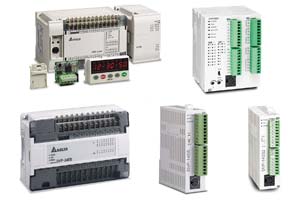RTD Temperature Sensor

Resistance Temperature Detectors (RTDs) available today can generally be categorized into one of two basic types of RTDs, depending on how their temperature sensing element is constructed. One type of RTD contains thin-film elements and the other type of RTD contains wire-wound elements. RTDs are constructed using a fine, pure, metallic, spring-like wire surrounded by an insulator and enclosed in a metal sheath. A change in temperature will cause an RTD to heat or cool, producing a proportional change in resistance.
2-wire RTD’s are mostly used with short lead wires or where close accuracy is not required. third wire provides a method for removing the average lead wire resistance from the sensor measurement. … This true bridge method will compensate for any differences in lead wire
To compensate for lead wire resistance, 3 wire RTDs have a third wire that provides a measurement of the resistance of the lead wire and subtracts this resistance from the read value. … Because 3 wire RTDs are so effective and affordable, they have become the industry standard resistances.
- Pin Type RTD Temperature Sensor
- Ring Type RTD Temperature Sensor
- Rod Type RTD Temperature Sensor
- Head Mounting Type RTD Temperature Sensor
- Thread Mounting Type RTD Temperature Sensor
Thermocouple Temperature Sensor
A thermocouple is a sensor that measures temperature. It consists of two different types of metals, joined together at one end. When the junction of the two metals is heated or cooled, a voltage is created that can be correlated back to the temperature.
Thermocouples are commonly used in a wide range of applications. There are many types of thermocouples, each with its own unique characteristics in terms of temperature range, durability, vibration resistance, chemical resistance, and application compatibility. Type J, K, T, & E are “Base Metal” thermocouples, the most common types of thermocouples.Type R, S, and B thermocouples are “Noble Metal” thermocouples, which are used in high temperature applications. Thermocouples are used in many industrial, scientific, and OEM applications. They can be found in nearly all industrial markets: Power Generation, Oil/Gas, Pharmaceutical, BioTech, Cement, Paper & Pulp, etc. Thermocouples are also used in everyday appliances like stoves, furnaces, and toasters.
Type K Thermocouple (Nickel-Chromium / Nickel-Alumel): The type K is the most common type of thermocouple. It’s inexpensive, accurate, reliable, and has a wide temperature range. Thermocouple grade wire, –454 to 2,300F (–270 to 1260C)
Type J Thermocouple (Iron/Constantan): The type J is also very common. It has a smaller temperature range and a shorter lifespan at higher temperatures than the Type K. It is equivalent to the Type K in terms of expense and reliability. Thermocouple grade wire, -346 to 1,400F (-210 to 760C).
Type T Thermocouple (Copper/Constantan): The Type T is a very stable thermocouple and is often used in extremely low temperature applications such as cryogenics or ultra low freezers. Thermocouple grade wire, -454 to 700F (-270 to 370C.
Type E Thermocouple (Nickel-Chromium/Constantan): The Type E has a stronger signal & higher accuracy than the Type K or Type J at moderate temperature ranges of 1,000F and lower. See temperature chart (linked) for details. Thermocouple grade wire, -454 to 1600F (-270 to 870C).
Type N Thermocouple (Nicrosil / Nisil): The Type N shares the same accuracy and temperature limits as the Type K. The type N is slightly more expensive. Thermocouple grade wire, -454 to 2300F (-270 to 392C).
Type S Thermocouple (Platinum Rhodium – 10% / Platinum): The Type S is used in very high temperature applications. It is commonly found in the BioTech and Pharmaceutical industries. It is sometimes used in lower temperature applications because of its high accuracy and stability. Thermocouple grade wire, -58 to 2700F (-50 to 1480C).
Type R Thermocouple (Platinum Rhodium -13% / Platinum): The Type R is used in very high temperature applications. It has a higher percentage of Rhodium than the Type S, which makes it more expensive. The Type R is very similar to the Type S in terms of performance. It is sometimes used in lower temperature applications because of its high accuracy and stability. Thermocouple grade wire, -58 to 2700F (-50 to 1480C).
Type B Thermocouple (Platinum Rhodium – 30% / Platinum Rhodium – 6%): The Type B thermocouple is used in extremely high temperature applications. It has the highest temperature limit of all of the thermocouples listed above. It maintains a high level of accuracy and stability at very high temperatures. Thermocouple grade wire, 32 to 3100F (0 to 1700C).
INGENIOUS POWER & CONTROL SYSTEMS PVT. LTD.
Manjali Building, Amman Kovil Cross Road, Near Shenoy’s, Cochin – 682035Mob : +91-9895284319E-Mail : sales@ipcsgroup.in | Web : www.ipcsgroup.in
INGENIOUS POWER & CONTROL SYSTEMS PVT. LTD.
2nd floor, D-Sector, 4th Street, Anna Nagar West Extension, Chennai – 600101Mob : +91-9745406664E-Mail : sales@ipcsgroup.in | Web : www.ipcsgroup.in
INGENIOUS POWER & CONTROL SYSTEMS PVT. LTD.
2nd Floor, Swathi Towers, Masakalipalayam Road, Periyar nagar, Peelamedu, Coimbatore – 641004 Mob : +91-7034343432 E-Mail : sales@ipcsgroup.in | Web : www.ipcsgroup.in
INGENIOUS POWER & CONTROL SYSTEMS PVT. LTD.
Rema Plaza, S.S.kovil Road, Thampanoor, Trivandrum, Kerala – 695001Mob : +91-9645084319E-Mail : sales@ipcsgroup.in | Web : www.ipcsgroup.in
INGENIOUS POWER & CONTROL SYSTEMS PVT. LTD.
Zamorin’s Square, Railway Link Road, Above Norka Roots, Calicut – 673002Mob : +91-9895284319E-Mail : sales@ipcsgroup.in | Web : www.ipcsgroup.in
INGENIOUS POWER & CONTROL SYSTEMS WLL.
PO Box No. 23475, Villa No. 30, Wadi Al Raha Street,
Near Bangladesh Embassy, Nuaija (43), DohaE-Mail : sales@ipcsgroup.inWeb : www.ipcsgroup.in
INGENIOUS POWER & CONTROL SYSTEMS
Suite # 510, Al Qusais Plaza
Damascus Street, Al Qusais, Dubai, U.A.EE-Mail : sales@ipcsgroup.inWeb : www.ipcsgroup.in
INGENIOUS POWER & CONTROL SYSTEMS
Al-olaya street, P.O.Box: 15425.
Riyadh 11444, Saudi ArabiaE-Mail : sales@ipcsgroup.inWeb : www.ipcsgroup.in
OUR BRANDS


































